What Is Epilepsy?

Epilepsy is a group of related disorders in the brain's electrical systems that are characterized by a tendency to cause recurrent seizures. Seizures cause changes in movement, behavior, sensation, or awareness, including loss of consciousness or convulsions, which last from a few seconds to a few minutes in most people. Seizures may occur in children and adults.
Epilepsy is not a form of mental illness or intellectual dysfunction.
Epilepsy Symptoms
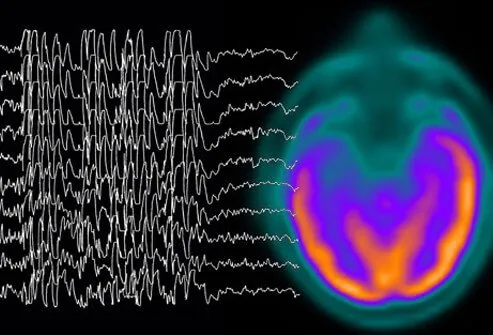
Most people equate epilepsy with convulsions, but epileptic seizures can produce many different symptoms; two large groups of seizures are termed partial and generalized. Symptoms may range from whole body convulsions to simply staring into space to barely noticeable muscle twitching. Each type of seizure has a distinct set of symptoms; the following slides will present some of these types of seizures and their symptoms.
Absence Seizures

Absence seizures produce symptoms of disconnection from surrounding stimuli; the patient appears "absent from their body" and stares off vacantly for a few seconds and then appears normal and has no memory of the incident. These types of seizures may begin about age 4 to 14; some people may experience many per day. Some children and a few adults may have absence seizures for years before they are diagnosed because they last for such a short period of time and caregivers or relatives may not notice the seizures.
Generalized Tonic Clonic Seizures

In contrast to absence seizures, generalized tonic clonic seizures (grand mall seizures) are easily recognized. These seizures usually begin with stiffening of the arms and legs followed by jerking motions of the limbs. Many people may fall from a standing position when the seizure occurs; bladder or bowel control may be lost, and the person may bite their tongue and/or cheek tissue. The convulsions may last up to about three minutes, after which the person may be feel weak and confused. Tonic clonic seizures that last more than five minutes constitute a medical emergency – 911 should be called.
Partial Seizures

While tonic clonic seizures usually involve the whole brain, partial seizures involve just one side of the brain. Partial seizures may be classified as simple or complex. Simple seizures usually involve a single part of the brain such as the motor area, sensory area, or others. The symptoms are related to the area affected; for example, the motor area will result in a change in motor activity such as a jerking finger or hand movement, or if in the sensory area, hearing sounds or smelling odors that are not present. Complex partial seizures occur in the frontal or temporal lobe with the brain and often involve other areas of the brain that affect alertness and awareness. These seizures result in daydream-like states and sometimes involve unusual activities like picking at the air as if something was there, repeating words or phrases, laughing, or other activities.
Causes of Epilepsy

The specific cause for epilepsy is unknown for about half of all epileptic patients according to the Epilepsy Foundation. However, there are a number of conditions that can result in epilepsy
- birth defects
- deprivation of oxygen to the brain
- strokes
- severe head injuries
- brain infections
- brain tissue alteration (for example, Alzheimer's disease)
Epilepsy in Children

Some children who develop epilepsy may outgrow the condition in a few years. However, many children prevent seizures by taking regular medication. Approximately 70% to 80% of children can control their condition completely with medicine. If your child has seizures that still occur sporadically with medication, discuss their situation with your school staff so your child can safely continue to do most classroom activities.
Is Dravet Syndrome a Type of Epilepsy?

Dravet syndrome is a seizure condition that begins before a child is 15 months old. Usually caused by a genetic disorder, Dravet produces seizures in only one half of the body, which may switch to the opposite half during subsequent seizures. Sometimes sudden temperature changes bring on these seizures.
Dravet is one particularly severe type of epilepsy. It causes a 300% higher likelihood of an early death. Medications for Dravet include Epidiolex and Fenfluramine.
EEG
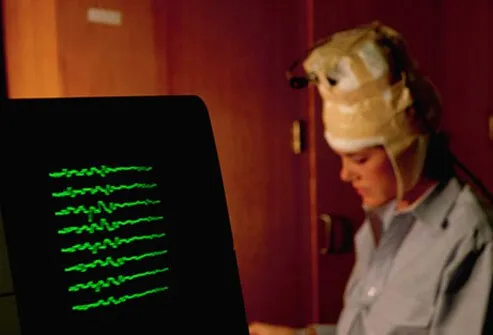
The diagnosis of epilepsy begins with a medical history and physical exam along with a detailed history that describes individual's seizures. In addition, other tests such as an EEG (electroencephalogram) that records the brain's electrical activity, and/or a CT or MRI of the brain, and blood tests may also be done.
Brain Scan
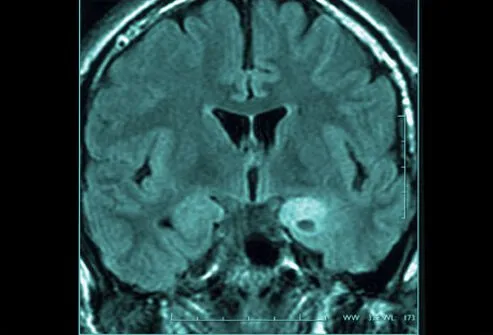
Images from the CT or MRI scans are useful because they help the physician identify certain causes of seizures such as tumors or blood clots or they may suggest other causes responsible for the seizures. These tests are considered essential by most physicians to help plan how to treat the individual patient.
Epilepsy Complications

Although most people with epilepsy live a normal life span and rarely suffer injuries from seizures, there are some patients, especially those with tonic clonic seizures, who may need to take special precautions such as wearing a helmet to protect the head during falls or avoid swimming or taking a bath without someone present to intervene (prevent drowning) if a seizure occurs. Other precautions during activities such as driving, childcare, and sport participation should be seriously considered as seizure activity may compromise an individual's ability to function safely during certain activities.
Patients who have a good response to medication have many fewer epilepsy complications; however, it is a good idea to discuss with your physician what activities you should be able to accomplish with appropriate medication.
Epilepsy Safety Precautions

As stated previously, safety precautions are a must for people with epilepsy. At highest risk are those patients who lose consciousness or have recurrent tonic clonic seizures. Situations such as swimming, driving a car, childcare (especially the care of infants and young children), and participation in some sports such as mountain or rock climbing, hang gliding, or other similar activities can put both the patient and other people at risk for injury or death. In addition, most states require a person with epilepsy to be seizure–free for a certain time (for example, six months) before the patient may drive a vehicle.
Treatment: Medication

Anti-seizure medications are the most common treatment used to reduce or prevent seizure activity. Your physician will likely prescribe one or more medications to treat the specific type of seizure you have. Your physician may need to adjust the doses and/or the type of medication to find the treatment that is best for you. About 70% of patients with epilepsy become seizure-free if they take their medicine regularly. For some patients, medication may need to be life-long; patients should not stop taking the medication without first consulting their physician.
Epilepsy Treatment: Ketogenic Diet

Researchers have found that a "classic" ketogenic diet can reduce or eliminate seizures in some children and a few adults. The diet has been used for about 100 years for people with epilepsy. It is a high fat, low carbohydrate diet that helps your body produce ketones. People who have high ketones are better able to control their seizures. The diet is strict and is often begun in a hospital setting. It has proven successful with some children who do not respond well to medication. It also may be used in conjunction with anti-seizure medication in some people.
VNS (Vagus Nerve Stimulation)
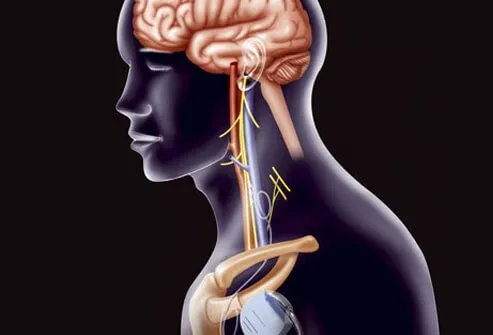
VNS (vagus nerve stimulation) is a treatment technique designed to prevent seizures by sending regular, mild pulses of electricity to the brain by stimulating the vagus nerve. VNS is done by surgically implanting a small device like a pacemaker that stimulates the vagus nerve to send signals to the brain. These signals can reduce or eliminate seizure activity and are usually placed in people that respond poorly to seizure medication.
Epilepsy Surgery

In some patients who have partial or complex partial seizures and don't respond to medical therapy, brain surgery may be an alternative treatment. The surgery involves removing a single small area of the brain tissue that is responsible for seizure activity. Alternatively, surgery may be done to remove brain tumors that may be stimulating seizure activity.
First Aid for Seizures

First aid for seizures involves keeping the person safe until the seizure stops, and/or calling 911. Call 911 for a seizure lasting more than five minutes, if it recurs, or if the seizing patient is pregnant, injured, or diabetic.
Keep yourself and others around you calm. Keeping the seizing patient safe involves a few simple procedures such as preventing any further injury by removing anything hard or sharp adjacent to the patient, placing the patient flat the floor on something soft like a jacket a blanket. Remove eyeglasses and removing ties or anything around the neck that may inhibit breathing. Do not restrain the person seizing or try to stop their movements. Turn the patient onto his or her side and put something soft beneath the patient's head to help breathing. Do not place anything inside the person's mouth. Time the seizure; if it lasts five minutes or longer, call 911.
When the patient returns to consciousness, be reassuring and helpful and stay with the patient until they are fully alert.
Treatment for Status Seizures

Prolonged (five minutes or greater) seizures may be termed status epilepticus. This condition is an emergency and requires emergency treatment to avoid hypoxia and other life-threatening problems. Frequently, status epilepticus is treated by intravenous medications and supplemental oxygen. Most patients with status epilepticus require hospital treatment and/or observation in the hospital.
Epilepsy and Pregnancy

Women with a history of epilepsy who are being treated should consult their OB/GYN physician before getting pregnant to ask how to best reduce the risk of fetal malformations, miscarriage, perinatal death, and increased seizure frequency. Many women who follow the instructions of their physicians by altering their medications and/or dosage can become pregnant and deliver a healthy child.
Seizure Dogs

"Seizure dog" is a term that relates to several activities associated with dogs that respond to epileptic seizures. Some dogs appear to sense a seizure before it begins, and the dog's activity alerts the patient and allows the patient to prepare for a seizure. Other dogs are trained to activate alarm systems to let people know their owner (seizure patient) is having a seizure. Some dogs are taught to lie next to the person having a seizure to protect them from injury.
Epilepsy Research
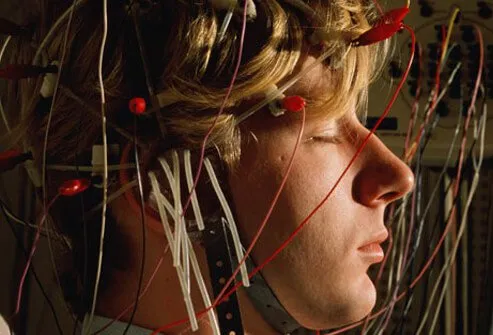
Epilepsy research is ongoing to provide new medical therapies to increase the number of people who can fully control seizures and to reduce the side effects of treatments. The National Institute of Health identifies four major research initiatives related to epilepsy:
- Epilepsy 4000: This collaboration uses genetic data from 4,000 people with epilepsy to identify all genetic components of this condition.
- The Center for SUDEP Research: This initiative seeks to understand Sudden Unexplained Death in Epilepsy.
- EpiBiosS4Rx: This research group looks for ways to prevent epilepsy using both animal and human studies involving traumatic brain injury and post-traumatic epilepsy.
- Channelopathy-Associated Epilepsy Research Center: This future initiative will use sophisticated research methods to understand the genetic components involved in channelopathy-associated epilepsy.
Living With Epilepsy

Many people diagnosed and treated for epilepsy can live full, active lives and many live seizure-free if they take medications on schedule. Even people with uncontrolled seizures can make lifestyle adjustments to allow them to have a reasonable lifestyle. There are many resources to help patients with epilepsy. A list of some sources are as follows:
- Epilepsy Foundation, epilepsy.com
- Epilepsy Institute, epilepsyinstitute.org
- American Academy of Neurology, aan.com
What Is Epilepsy? Symptoms, Causes, and Treatments
This tool does not provide medical advice. See additional information: 
© 1996-2024 WebMD, LLC. All rights reserved.
